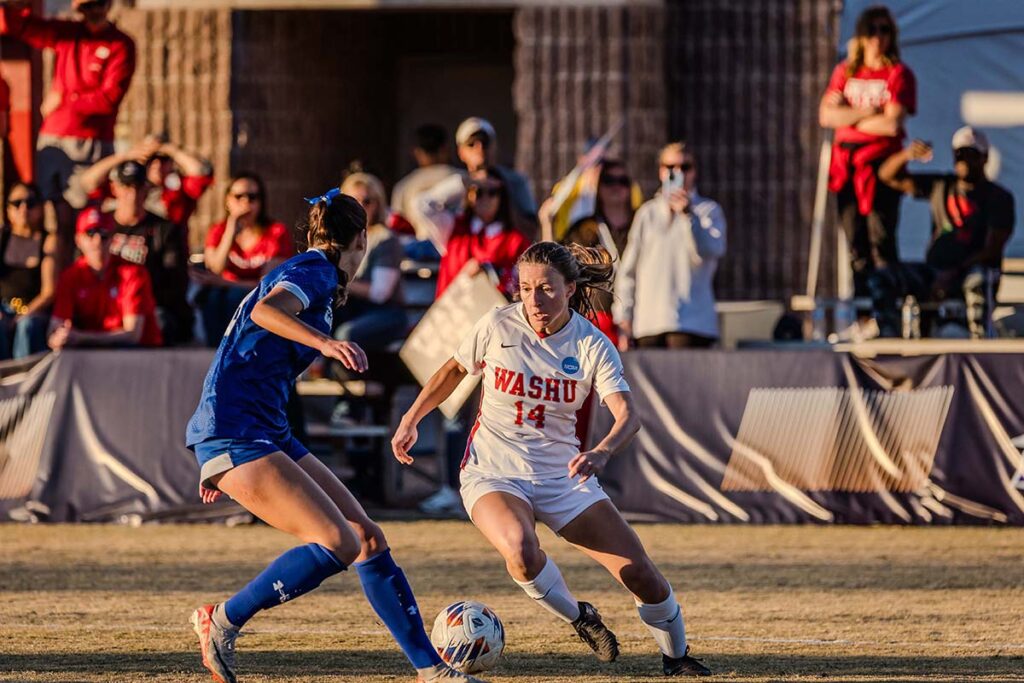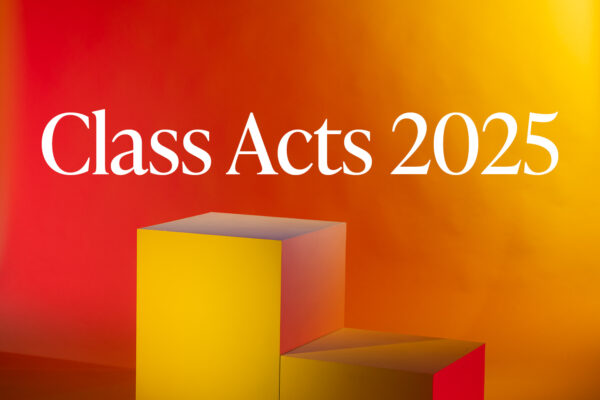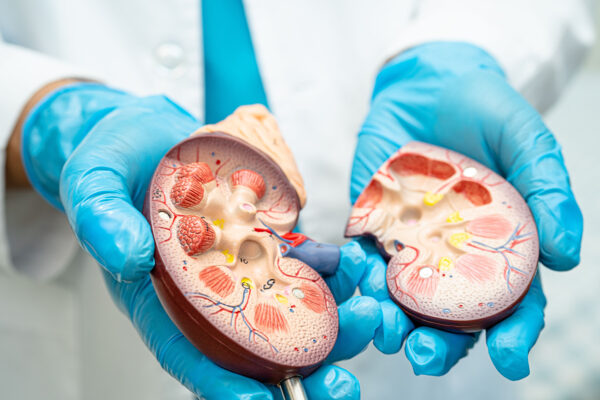Gaelen Clayton has spent a large part of her four years at WashU thinking about goals — setting them academically and scoring them as a midfielder for the women’s soccer team, which just won the Division III national championship.
Through her time as a mechanical engineering student and researcher at the McKelvey School of Engineering and as a player on the Francis Olympic Field pitch, Clayton has learned how to be a self-starter and enjoys helping younger students do the same.
Clayton recently was named the recipient of a postgraduate scholarship through the NCAA for her academic and athletic achievements, as well as for the leadership she demonstrated throughout her time on the soccer team.
This summer, Clayton will carry out research and development for Stryker Medical Devices, focusing on products that are used for acute medical care. Afterward, she will return to WashU to pursue a master’s in mechanical engineering. Here, Clayton talks about her passion for building new technologies and her success on the field.
What did you like about your recent work as a fellow for the WashU Center for Innovation in Neuroscience and Technology?
We worked with a team of neurosurgeons and people in the mechanical engineering department at WashU to design a new system. We were given a one-sentence summary of an idea for a drug delivery service, and we had to reach out to the lab we were going to work with. It was really self-motivated. At the end of the summer, we created a physical prototype and included mechanical and electrical components. Then we also did some research with models where we tested our hypothesis to make sure it actually works. That was a super cool experience, and I think it’s exactly where I wanted to be — designing new things at the intersection of neuroscience and mechanical engineering.
What excites you about designing medical devices?
I really want to be building and designing new technologies that combine mechanical engineering with biology. One of my prior internships was in the human systems department at Vast, which is doing work at the intersection of aerospace and humans. Medical devices are at the intersection of mechanical engineering and humans. I’ve always been interested in how you can apply technical knowledge to biological systems.
As a senior on the soccer team, what has leadership meant to you?
I wanted to make sure that the freshmen coming in felt comfortable wanting to play and felt like they could make mistakes and would bounce back from them. There’s a balance between accountability and support. Obviously, you should try your best and play at your best level, but you should also feel like you have the creativity to try new things, even if they don’t work out. This year was also fun for me because some of our freshmen are engineering students. I even got to give one of them an old textbook of mine!



